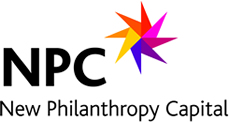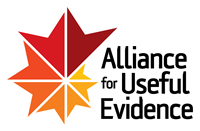Case StudiesExternal Databases and ResourcesToolsWorking Papers and Research
Books and Guides
This report by Lizzie Trotter, Jim Vine, Matt Leach and Daniel Fujiwara from HACT, produced in conjunction with Value Calculator, places robust values on the social impact of community investment activities. It includes values as well as practical guidance on how to apply them to achieve a basic assessment of social value using the Well-being Valuation approach.
This paper, by Daniel Fujiwara for HACT, sets out the methodology and analytical approach underlying the work on community investment and social value. The paper explains the Well-being Valuation approach, provides details of the datasets that the analysis draws on, describes the statistical method in technical detail, and introduces the broader theory behind social impact.
The Public Services (Social Value) Act came into force on 31 January 2013. This briefing from the National Housing Association by Sara Cunningham outlines the Public Services (Social Value) Act 2012 and examines what the new legislative requirement mean for housing associations’ procurement and tendering processes. It also explains the options that housing associations have if they wish to analyse the social value of their own activities and how this may help in securing contracts with local authorities or other public bodies.
For housing associations the Act applies in two important and distinct respects:
- Housing associations are bound by the requirements of the legislation when procuring a service.
- Housing associations must be prepared to define the social and economic value and impact of the services they offer when tendering for a service from a local authority or another relevant body.
Case Studies
‘Exceeding Expectations’ is a report by Kevin Gulliver and Dawn Prentice from Human City institute (HCi) for Trident Social Investment Group on a comprehensive set of social accounts. The report tracks the community impact of Trident using a triangulated approach to evaluation of economic and social value based on HCI’s ‘Measuring-Up’ methodology. It shows how social landlords can measure their wider impact beyond the bottom line. More importantly, the report clearly illustrates how economic and social value can be measured and presented in a highly collaborative way with extensive involvement of stakeholders, including partners and residents. It also represents as case study of a major social landlord group that includes housing associations, charities and social enterprises. The results fed into the development of Trident’s Social Investment Strategy.
External Databases and Resources
Here you can find all the publications that HACT has published on work around measuring social impact.
More than 6400 publications have now been selected by TSRC for inclusion in the Third Sector Knowledge Portal - an easy-to-use online library of research, evidence, and analysis.
It has been developed by TSRC in partnership with the British Library and the Big Lottery Fund, and brings together over 6000 works such as: impact reports from third sector organisations; academic research projects; government studies; and more, in one collection of downloads, links and summaries.
Impact Reports
Calvert Foundation’s 2013 Social Impact Report explores the impact that investors, funders, supporters, portfolio partners, and advisors have empowered them to create in 2012. Calvert Foundation works at the nexus of communities and capital, meaning their impact is both the outcomes of our lending - affordable housing units built, jobs created, etc. - and the ways that they enable people to invest in the causes that inspire them.
This research study, carried out by Rick Rijsdijk of the Social Value Lab, examines the impact of the Vineburgh Development, a phased £37 million project being delivered over five years by Cunninghame Housing Association. Based on a Social Return on Investment (SROI) analysis, the research shows the considerable impact that housing led physical regeneration can have on the health, confidence, pride and general wellbeing of tenants. It has revealed significant positive effects not just on the tenants of these new homes, but also on the wider community of Vineburgh and other local stakeholders.
This is a summary of the research report by Vanessa Wilkes and Professor David Mullins from Third Sector Research Centre at the University of Birmingham was commissioned by HACT. It provides an up-to-date picture of the measurement tools being used by housing organisations to measure the social impact of community investment activities, showing wide variation in the approaches used.
While there is general recognition of the importance of measuring impact, there are also concerns about cost, approach and potential duplication. The report will enable more sharing of evidence about different approaches to impact measurement and what works in terms of community investment.
This research report by Vanessa Wilkes and Professor David Mullins from Third Sector Research Centre at the University of Birmingham was commissioned by HACT. It provides an up-to-date picture of the measurement tools being used by housing organisations to measure the social impact of community investment activities, showing wide variation in the approaches used.
While there is general recognition of the importance of measuring impact, there are also concerns about cost, approach and potential duplication. The report will enable more sharing of evidence about different approaches to impact measurement and what works in terms of community investment.
Value Insight is a tool from HACT for understanding, measuring and mapping the social impact of community investment activities and the impact on the local economy.
The outcomes matrix is a tool to help social investment financial intermediaries (SIFI’s) and social sector organisations to plan, measure and learn about their social impact. It aims to develop common ground and language for social investment and impact assessment in the social sector. The outcomes and measures are not intended to be prescriptive or exhaustive but should provide a helpful starting point for organisations to consider their social impact.
Working Papers and Research
Crisis’ report by Julie Rugg, Centre for Housing Policy, University of York, presents the findings from an evaluation of the Private Rented Sector Access Development Programme which began in 2010 and was devised by Crisis, working with and funded by the DCLG. The programme funded a total of 153 schemes across England.
The Impact Investor Project was established in 2012 as a two-year research partnership between InSight at Pacific Community Ventures, CASE at Duke University, and ImpactAssets. The goal was simple: supplant the guesswork and conjecture in impact investing with solid evidence of high performance and, in the process, expose the concrete practices of outstanding funds for use as the foundation for a more sophisticated and successful market.
Impact Investing 2.0 profiles twelve funds who work in vastly different sectors, from microfinance in India to sustainable property in the UK, and have accordingly pursued very different investment strategies and approaches to social impact.Their success across such a broad set of parameters offers many lessons for the industry and beyond.
This paper by Claudia Wood, Jo Salter and Phillida Cheetham explores how social housing providers can face up to the dual challenges of increased demand and fewer resources by doing what they do best – providing early, low level supports in an integrated fashion, to ensure resources go further and to generate greater cost savings for the NHS, social care and criminal justice systems.
The Development of the Outcomes Star by Joy MacKeith was originally published in Housing Care and Support: A journal on policy, research and practice. This paper describes the development process for the Outcomes Stars as a suite of tools which are designed to simultaneously measure and support change when working with vulnerable people as service users. It describes the original process of development of the first Star, in homelessness services in the UK; and subsequent roll out to other client groups and in other countries. The paper indicates the theoretical and philosophical under-pinning of an approach which aims to embody both research and values-based practice in empowerment and respect for the individual.





